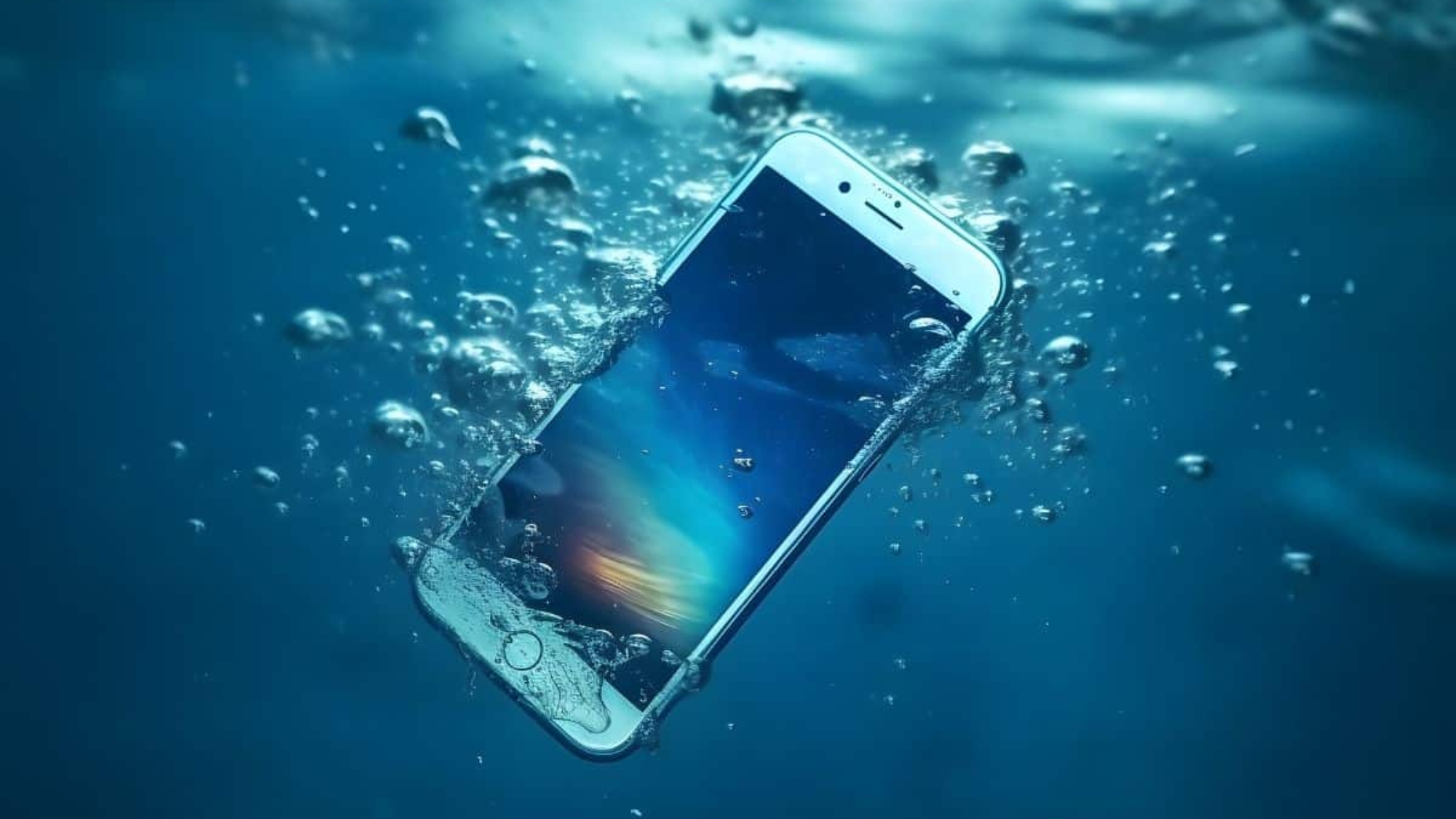Accidentally dropped your phone in water? Don’t panic—you’re not alone. Whether it slipped into the sink, got caught in the rain, or took an unexpected dive in the pool, acting fast can make all the difference. Knowing how to get water out of phone quickly and safely can help you avoid permanent damage and costly repairs.
In this guide, we’ll walk you through every step—from the immediate actions you should take to proven drying methods and long-term prevention tips. We’ll also cover common mistakes to avoid and when it’s time to call in a professional. If your device just got wet, this is the must-read guide to help you save it and get it working again.
Understanding Water Damage and Why Speed Matters
Water and electronics don’t mix. In this section, learn why acting fast is critical when dealing with a soaked phone and how immediate steps can reduce damage. If you’re wondering how to get water out of phone, start here.
What Happens When Water Enters a Phone?
When water seeps into your phone, it can reach internal circuits, causing short circuits, corrosion, or battery failure. Moisture can also disrupt your screen and speakers. Knowing what’s happening inside helps you take the right steps to limit permanent damage.
Signs Your Phone Has Water Inside
Common signs include a flickering screen, muffled audio, camera fog, or your phone not charging. You might also see a liquid damage indicator (LDI) inside your SIM tray turn red. Spotting these symptoms early can help guide your next move.
Immediate Risks of Turning On a Wet Device
Turning on a wet phone can instantly short-circuit the internal components, leading to permanent damage. Always power it off right away. If you’re unsure how to get water out of phone safely, avoid using it until it’s completely dry.
8 Proven Steps on How to Get Water Out of Phone?
You dropped your phone in water? Surely you are searching for the answer“ What to do if your phone falls in water?” If you’re looking for the easiest way on how to get water out of your phone, here are the 8 following easy steps to help you back your phone in optimal condition.
So, follow the directions below to easily remove water from the phone. Let’s drive in the detailed breakdown!
- Firstly, Pull your phone out of the liquid right away. The longer it stays submerged, the more water will seep into its ports.
- Then, power it off and keep it off to avoid short circuits.
- Then, remove the protective case.
- If possible, open the back cover and remove the battery, SIM card, and microSD card to prevent damage. For detailed steps on ejecting the SIM card, refer to our dedicated iPhone and Android SIM removal guides available on our site, where you’ll find illustrated instructions to safely handle your device.
- Use a soft cloth or paper towel to gently dab your phone dry—avoid rubbing, which can push moisture deeper into sensitive parts. For devices fully submerged, you can carefully run a low-power vacuum along seams and ports to extract lingering water droplets. Take your time and keep the vacuum moving to prevent damage from excessive suction, potentially causing further harm.
- Avoid roasting your phone in direct sunlight. Instead, store it somewhere cool and dry.
- You’ve likely heard the advice to put a wet phone in rice—but we don’t recommend it. A better option is silica gel packets, the kind found in new shoes or electronics packaging. Place your phone in a sealed zip-top bag filled with these packets and leave it there for 24 to 48 hours.
- Once your phone has completely dried, try turning it on. If it doesn’t power up, plug it in, let it charge fully, and then try again.
If your phone powers on—great news! But keep an eye on it over the next week, as some features may not work like they used to.
Still having issues? No worries. Visit your nearest Techy Gadget repair store and let our certified experts handle it. We offer same-day repairs to get you back on track fast.
Preventing Future Water Damage
Prevention is key. After learning how to get water out of phone, it’s smart to protect it from future accidents. This section covers protective gear, smart habits, and maintenance tips to keep your device safe from moisture and water exposure.
Best Waterproof Cases and Screen Protectors
Investing in a high-quality waterproof phone case and screen protector adds an extra layer of defense. Look for products with IP67 or IP68 ratings to guard against spills, rain, and full submersion. These tools are essential for anyone prone to water exposure.
Water-Resistant Practices and Care Tips
Simple habits go a long way—avoid using your phone near pools, sinks, or during heavy rain. Always dry your hands before touching the device and never charge a phone that might be wet. Small steps help prevent serious water damage.
Regular Maintenance and Checkups
Routinely inspect your phone’s ports, seals, and buttons for wear and tear. Visit a repair technician if you notice loose parts or reduced water resistance. Preventive checkups ensure your phone stays protected against moisture-related issues in the long run.
When to Seek Professional Help
If your efforts to figure out how to get water out of phone didn’t fully restore it, it might be time to call in the pros. This section helps you weigh your options and understand what professional phone repair involves.
Cost vs. Risk: Repair Shop vs. Replacement
Before spending on a new phone, compare repair costs. Minor water damage might be fixable for less than $100, while a replacement could cost hundreds. Trusted phone repair shops like Techy Company often offer diagnostics to help you make an informed, budget-friendly choice.
What to Expect in a Water-Damage Repair Service
Professional technicians use specialized tools like ultrasonic cleaners and drying chambers to restore water-damaged devices. Expect a full inspection, internal cleaning, and part replacements if necessary. Most shops offer same-day service, especially for common issues like non-working screens or ports.
Warranty and Insurance Considerations
Check if your device is under warranty or covered by phone insurance. While water damage often voids standard warranties, some extended plans may cover it. Contact your provider to explore coverage options before paying out-of-pocket for repairs or replacements.
To Wrap Up
Water and phones don’t mix—but quick action can make all the difference. By following the steps in this guide, you now know exactly how to get water out of your phone safely and effectively. From powering it off immediately to using proper drying methods, every step counts in preventing long-term damage.
Remember, patience is key—don’t rush to turn it back on. And if the problem persists, don’t hesitate to seek professional help. Protecting your device now can save you from bigger headaches later. Stay prepared, stay informed, and keep your phone safe from future water mishaps.
FAQs: Frequently Asked Questions
Putting your phone in rice is a popular tip, but it’s not the most effective method. Rice absorbs moisture slowly and doesn’t reach deep inside the device. Plus, rice dust can get stuck in ports. Silica gel packets or a professional drying solution work much better.
You should wait at least 24 to 48 hours before turning your phone back on. Even if it looks dry outside, internal components may still hold moisture, and powering it up too soon can cause serious short circuits.
Yes, most standard warranties do not cover water damage. Many phones have a built-in liquid damage indicator (LDI) that turns color when exposed to moisture. This voids coverage unless you have extended protection or insurance that includes water-related incidents.
No. Using a hair dryer, oven, or any heat source can damage internal components by overheating them. The force of a hair dryer can also push moisture further inside. Always stick to air-drying, silica gel, or vacuum-based methods.
Patience is key—wait a minimum of 24 hours, but ideally 48, especially if the phone was fully submerged. Only turn it on once you’re confident it’s completely dry, both inside and out. Rushing this step can permanently damage the device.



Add a Comment